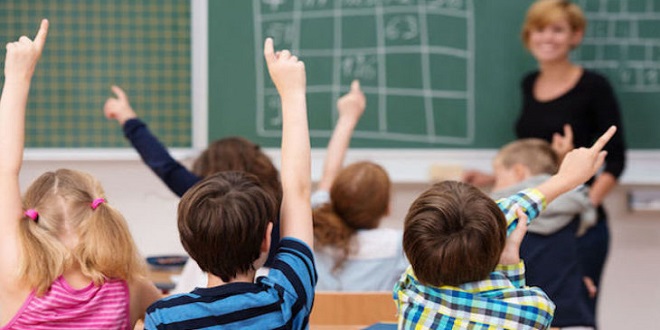Why is “play” important in the classroom?

If you want your children to be ready for elementary school culture lessons in kindergarten in advance, then forget about those course arrangements Instead, it is best to find a classroom that allows children to learn in their best way.
In a daily day in a private kindergarten in New York City, the students are very busy during reading; they focused on pinyin, mixed sounds, and practiced writing upper- and lower-case letters. The math class focuses on addition, subtraction and graphics. In English class, audio recordings help them understand and pronounce.
Play also helps children to master the abilities they need to learn academic subjects in the future. Story time improves children’s pre-reading skills, such as rhyming, puns, and the ability to trace the plot. A simple activity, such as playing with soap bubbles, can stimulate scientific learning, while stacking wood establishes a foundation for understanding geometry. Appetitive games (such as jigsaw puzzles, take it apart, and reorganize) exercise muscle sensitivity, while unstructured group games can improve children’s social skills.
Early academic methods do not seem to improve children’s classroom performance. A study by the University of North Florida in the United States found that fourth-grade students who participated in game-based kindergartens performed better academically and socially than their peers. A study published in “Early Childhood Research and Practice” found a clear link between pretend play and improved language skills. A child’s future success in learning does not depend on the kindergarten he has attended. Finding a way to make him happy to learn can do more with less. Follow the steps below to find a way.
- Look at the self-description of the school to find the kind of school that claims to be “entertainment” or “teach students in accordance with their aptitude”. The characteristics of these two schools are that unstructured activities are part of the school’s educational purpose.
- Ask questions: A good start is “How is a typical school day arranged?” Ideally, about one-third of the time is devoted to children’s free play. During this period, children can choose their own games, materials, and playmates,” said Alexandra Figures-Daniel, who is the National Early Education Research Institute. There is also some time for exploration under the leadership of the teacher. See if the school follows a strict curriculum and whether the teacher will arrange activities for your interest.
- Looking for red flags: you definitely don’t want to see a lot of computers or TVs. If you find out, you can ask the school how these computers are used and how often they are used. “Screens will interfere with children’s hands-on ability,” Lynn Say. Similarly, electronic toys have an impact on children’s thinking. “Also check the artwork on the wall. If the paintings look very similar, as if they were copied, or the work seems to be generated from a toolkit, then this kind of activity cannot stimulate the creativity of the child,” Lynn added. Although it sounds Contrary to common sense, too much order in the classroom may also be a warning sign. If most of the materials are neatly stored on drawers and shelves, it means that they may not be used by children often.
- Observe children: Kathy Sucich from Framingham, Massachusetts, when looking for her oldest child in kindergarten, when she walked into the classroom, he surprised to hear his own voice”. Its game time, but the children are almost quiet,” Sucich recalled. On the contrary, when she secretly went to the kindergarten where all three children were attending, “I heard laughter and saw the children playing and running around,” she said. Parents must look for signs that their children are actually participating in activities.
- Fun Classroom: When the child is jumping over a puddle or waving an imaginary magic wand, she is not only having fun, she is also setting up a stage for learning. Discover the educational benefits of some common kindergarten activities.
- Sorting: Sort the buttons by color or put the goods in the virtual supermarket according to the food category. This will help children learn to recognize different patterns, which is an important part of mathematics.
- Water Play: When they put ice cubes in a bucket of warm water, pour the liquid in one container into another, or play with the flow of water in a hose or faucet, the children are studying the flow and movement of water. These are two Basic physical concepts.
Pretending to imagine games can improve children’s language skills and vocabulary, and pretending to be a cashier can develop their early addition and subtraction skills. The following link essaywriters.ca can help your children in essay writing.




